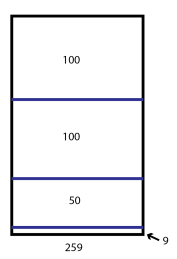

My fourth grade group just finished up a unit on division. They spent a great deal of time exploring division and what that means in the context of a variety of situations. One of the more interesting parts of the unit delved into the use of the partial-quotients method.
You might be a fan of this method if you’ve ever wanted to know why the traditional division algorithm works. I was in that boat. During my K-12 math experience I never questioned what was introduced. I was always encouraged to use the traditional division algorithm. It didn’t make sense to me why I was dropping zeros or setting up the problem in a certain structure. I just played school and figured that it wasn’t worth trying to find meaning, but instead just pass the class and move on.

For the past ten years I have been introducing the partial-quotients method to students. This method brings more meaning to why the division process works. Students also seems to grasp a better understanding of how partial-quotients can add up to a quotient with a remainder.

This year I introduced something different to the students. Students were asked to use the partial-quotients method to divide numbers and then create an area model of the process. I had quite a few confused looks as most students think of multiplication when using area models. After modeling this a bit I noticed that students continued to have issues with appropriately spacing out their area models. This was a great opportunity for students to use trial-and-error.
I noticed that students had to first use the partial-quotients method to find the quotient and remainder. They then had to split up the area model into sections that matched the problem. This spatial awareness piece is so important, yet I find students struggled with it to a point that they were asking for help. Maybe it’s a lack of exposure, but estimating where to split up an area model to match the partial-quotients seemed to challenge students on another level.
This activity has me wondering how often students use spatial awareness strategies in the math classroom. How often are they given these opportunities? Reasoning and estimating strategies also play a role, but actually spacing out the partitions isn’t what students were expecting last week.
I’m looking forward to seeing how students progress in using area models moving forward.




